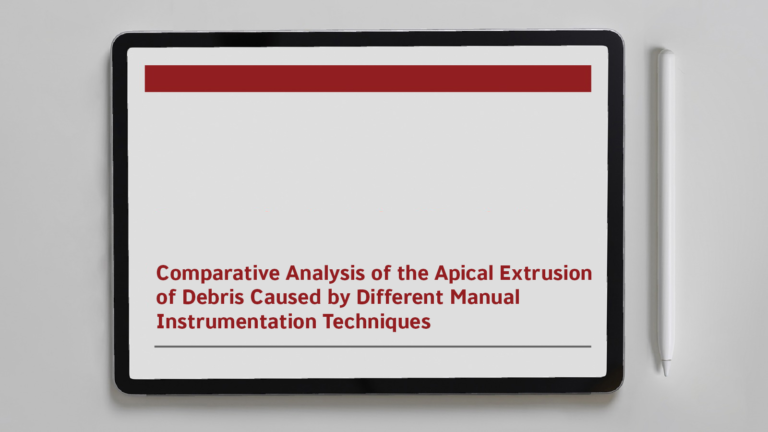
The aim of this study was to assess ex vivo the erosive effects of passive ultrasonic irrigation versus irrigation with reciprocating activation on the dentinal surface of the root canal at 3 predetermined levels using environmental scanning electron microscopy.
Methods: Ten roots of mandibular premolars were prepared using the ProTaper Universal system (Dentsply Maillefer, Ballaigues, Switzerland). The specimens were embedded in flasks cleaved longitudinally, and indentations were made 3.0, 6.0, and 9.0 mm from the apex. The specimens in the control group (n = 10) were cleaned in an ultrasonic bath containing 2.5% sodium hypochlorite and 17% EDTA and then dried. Then, environmental scanning electron microscopic images were obtained at magnification _ 800.
The specimens were then reassembled in their flasks, and the NaOCl and EDTA solutions were activated according to the conditions established for the experimental groups (ie, the passive ultrasonic irrigation group [n = 5] and the Easy Clean (Easy Equipamentos Odontológicos, Belo Horizonte, MG, Brazil) group, irrigation with reciprocating activation with the Easy Clean instrument [n = 5]). The specimens of both experimental groups were analyzed in the same manner as in the control group. Analysis of the dentinal surface topography was conducted using the 3D Roughness Reconstruction program (Phenom-World BV, Eindhoven, the Netherlands) as a means for assessing erosion. The data were evaluated by means of the Kruskal-Wallis, Student-Newman-Keuls, and Mann-Whitney tests. Results: In the EasyClean group, the degree of dentinal erosion at 3.0 mm was significantly higher than at 9.0 mm. In the other comparisons, there was no statistically significant difference (P < .05).
Conclusions: The final irrigation techniques tested were equivalent in relation to the degree of erosion caused to the dentinal surface. (J Endod 2017;43:141–146).
Key Words: Endodontic irrigation, environmental scanning electron microscopy, erosion, final irrigation, passive ultrasonic irrigation, reciprocating motion.
Rua Barão de Paraopeba, 230, Jardinópolis, Belo Horizonte – Minas Gerais – 30532-150 – CNPJ: 034407030001-29
